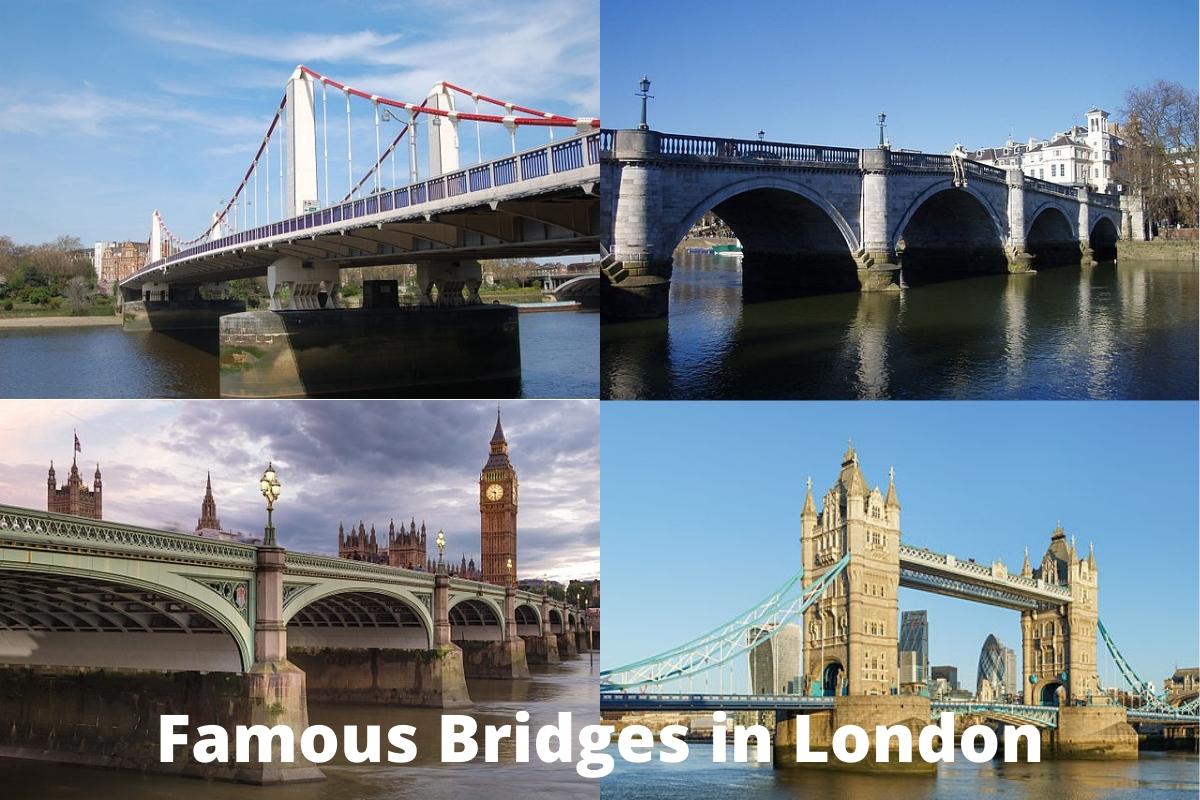There are 35 bridges across the river in London, and they range in style from Neo-Gothic to box-girder. So, no matter where you are on the Thames, you will be within striking distance of at least one of these landmarks.
From London’s famous bridges, you can have entry to a few of the best tours, attractions, plus activities in the capital.
Various London bridges are now included in the Luminous River art exhibit, which is a major attraction in the city.
Millions of people come here every year to see some, if not all the bridges among other historic attractions.
Famous Bridges in London
1. Tower Bridge
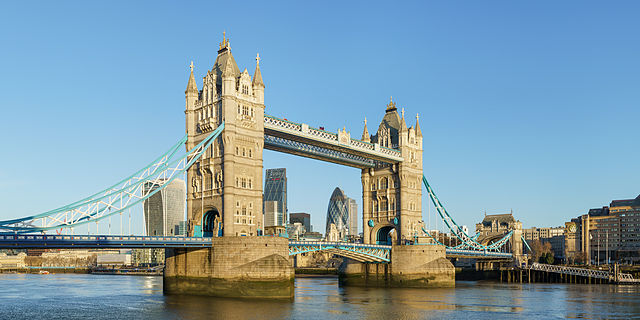
Tower Bridge is the landmark that identifies London. Take in breathtaking vistas from the elevated walkways, and get a rush from staring down at the thriving streets of London below.
Completed in 1894, Tower Bridge is the most recognizable bridge in London. Approximately 40,000 people a day walk through this incredible engineering marvel, which is 800 feet (244 meters) in length and painted with 5,812 gallons (22,000 liters) of paint.
However, this procedure has not always been without its share of bumps. In 1952, while one of London’s double-decker buses was making its way across, construction on the bridge began. By speeding up and jumping the gap, driver Albert Gunton avoided disaster.
More than 40,000 vehicles, bicycles, and foot traffic pass Tower Bridge every day. The bridge is on the London Inner Ring Road and is at the eastern limit of the London congestion charge zone (cars do not suffer the penalty while crossing the bridge) (drivers do not incur the charge by crossing the bridge).
Also Read: Most Famous Bridges
The City of London Corporation has limited the maximum speed of cars crossing the bridge to 32 kilometers per hour (20 miles per hour) and the maximum weight of vehicles crossing the bridge to 20 short tons (18 metric tons) to protect structural stability.
Vehicle speeds on the bridge are monitored by cameras, and offenders get automatic fines based on their registration numbers.
2. London Bridge
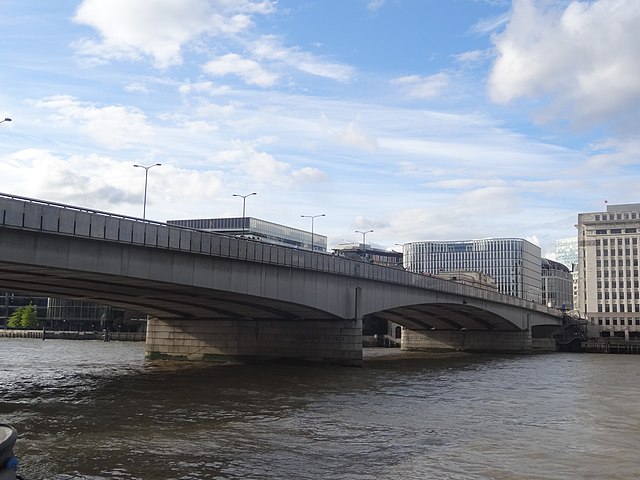
London Bridge is the name of several different bridges that have crossed the Thames between the City of London and Southwark.
The current bridge, constructed of concrete and steel, opened to traffic in 1973. It took the place of a stone-arched bridge built in the 19th century, which in turn had replaced a medieval bridge built of stone.
The jingle “London Bridge Is Falling” as well as T. S. Eliot’s poetic verse The Waste Land are just two examples of the many ways in which London Bridge has been featured in paintings, writings, and music.
The current bridge is located 30 meters (98 ft) north of prior layouts near the western edge of the Pool of London. After Kingston upon Thames, London Bridge was the only route across the Thames until the 1729 construction of Putney Bridge.
Bridge House Estates, an autonomous charity with medieval origins and ties to the City of London Corporation, owns and maintains the contemporary bridge. The Greater London Authority is responsible for its condition as it carries the A3 throughout its length.
3. Millennium Bridge
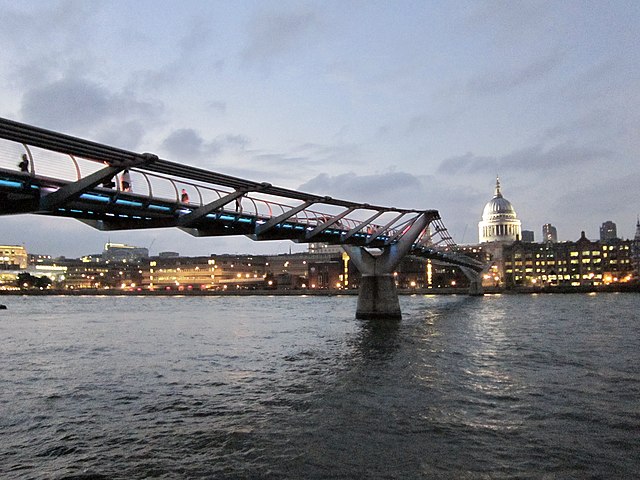
On June 10, 2000, people were invited to witness the opening of the Millennium Bridge, which connects the northern side of the Thames to the south bank, where the Tate Modern, as well as Shakespeare’s Globe, may be found.
The footbridge was once known as “the wobbly bridge,” even though the source of its infamous shake has been eliminated.
The Millennium Bridge has three claims to fame: it is the newest bridge to cross the Thames; it is the first pedestrian-only bridge in London and it holds the record for being the bridge with the quickest opening-closing duration in history, as it was closed only two days after being inaugurated.
Also Read: Bridges in Europe
Southwark Council announced a competition for architects in 1996 to create a bridge that would be fitting for the 21st century. Foster & Partners and Ove Arup & Partners’ competing designs for the bridge were selected, and construction on the new bridge began in 1998.
4. Westminster Bridge
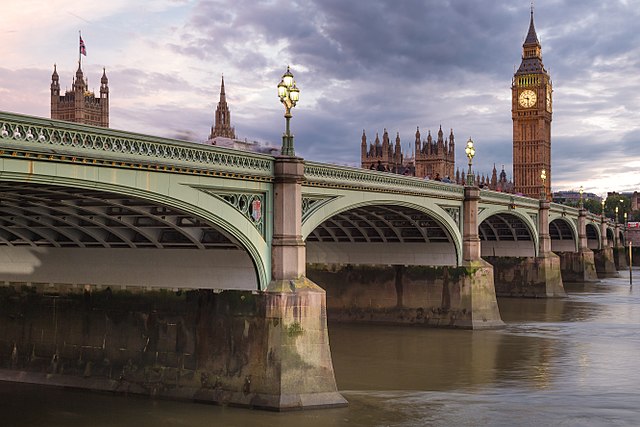
The best way to capture a picture-perfect shot of Big Ben on the northern bank or the London Eye on the southern bank is from across the river at Westminster Bridge.
Built by Thomas Page, an Engineer, it’s the oldest bridge used as a roadway over the Thames in the heart of London. Details of the bridge were designed by Charles Barry, who also worked on the Palace of Westminster.
Westminster Bridge is a river crossing in Central London. In 1750, Charles Labelle, a Swiss architect, constructed the initial building. However, in 1862, the current edifice, designed by Thomas Page, replaced it.
In honor of its close vicinity to the House of Commons as well as the other Parliament buildings, this bridge was given a coat of green paint to match the seats inside the chamber.
Due to its nearness to the nation’s capital, London Bridge is frequently mistaken for the more distant structure upstream.
5. Blackfriars Bridge
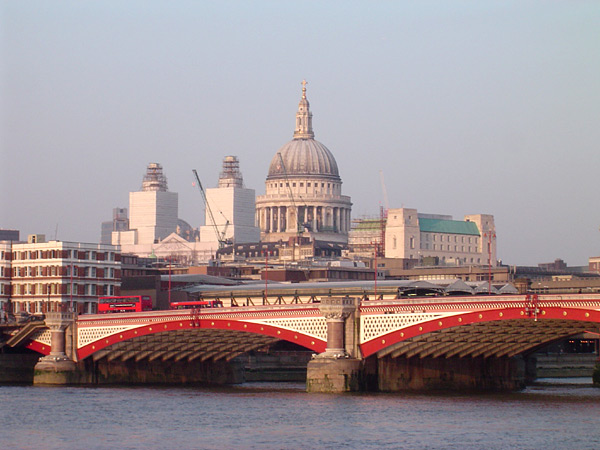
To travel between the Inns of Court and the Tate Modern, you’ll have to cross that bridge, which has a Grade II Listed Building designation. The Bridge is owned by the Bridge House Estates and is maintained by them.
With a length of 923 feet plus five wrought iron arches, the bridge is reminiscent of its now-demolished twin, a railroad bridge. P.A. workers constructed it. In 1869, Queen Victoria launched the Thom & Company business, which had been built according to plans drawn out by Thomas Cubitt.
Along the piers of the bridge are stone sculptures by John Birnie Philip depicting maritime life and a variation of seabirds on the East side, and freshwater birds on the West side.
These birds provide a visual cue that the Thames is hybrid saltwater and freshwater river. The Blackfriars, a Dominican order of friars known for their distinctive black habitat, are credited with naming the bridge.
6. Southwark Bridge
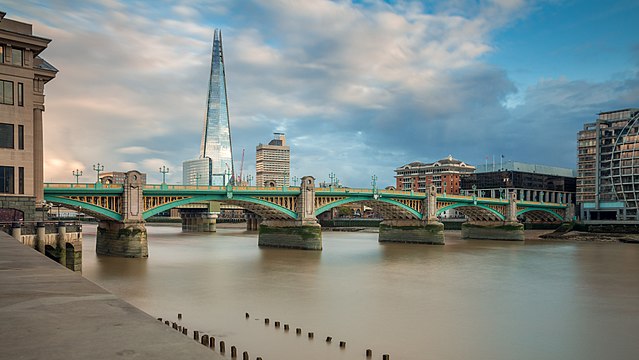
Southwark, on the Thames’ south bank as well as the City of London, is connected by Southwark Bridge. It’s the nearest to Shakespeare’s Globe Theatre, plus it’s also the most serene in the city. The doors first opened in 1921.
When the first bridge at this location opened in 1819, it was called Queen Street Bridge. The 73-meter span of the bridge was the lengthiest ever constructed using cast iron.
The bridge connects the two sides of the river, allowing passage to Upper Thames Street on the north bank where the Ring of steel prevents entry to the City from the north.
Now it’s sometimes referred to as the “car park bridge” because coach drivers utilize it for parking their cars, earning it the distinction as central London’s least frequented bridge.
7. Waterloo Bridge
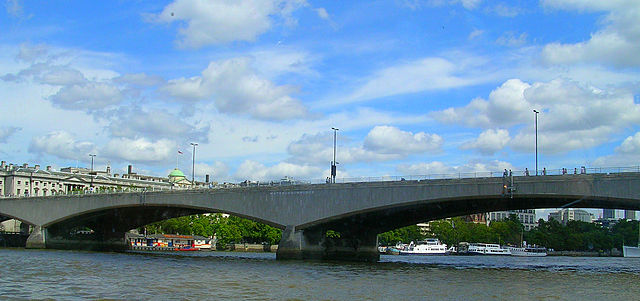
For a panoramic view of the beautiful London skyline, this is the bridge to visit. Don’t be surprised if, at any given time, you come upon scores of photographers trying to capture the best angle or lighting.
The existing Waterloo Bridge, which opened in 1945, was constructed largely by females throughout World War II, earning it the moniker the “Ladies Bridge ” (as most men were in the warzones).
As a tribute to the triumph of the Prussians, Dutch, as well as British at the 1815 Battle of Waterloo, they built nine granite arches nearly two years later.
Waterloo Bridge accommodates both pedestrians and automobiles. The bridge is named after the 1815 Waterloo victory. It boasts some of the best views of London from any point on the ground due to its position at a pivotal bend in the river level.
8. Albert Bridge
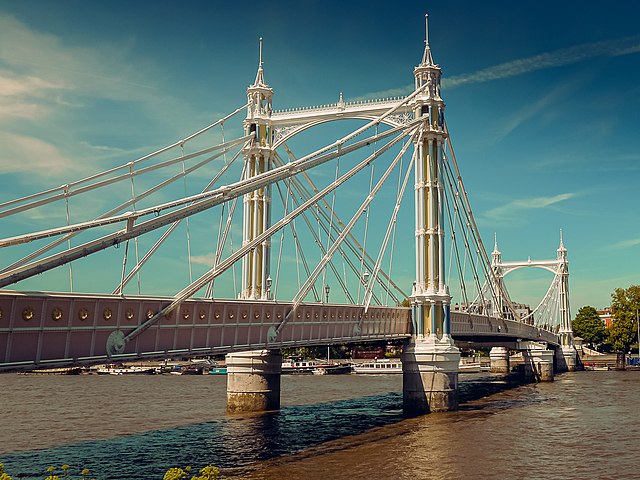
The Albert Bridge links the neighborhoods of Chelsea and Battersea on opposite sides of the Thames.
While being one of only two roadways that were never replaced, the Albert Bridge has been reinforced twice to accommodate the city’s ever-increasing car population. Keep an eye out for the last of London’s octagonal toll booths.
Albert Bridge, located close to Chelsea Bridge, was named after Prince Albert. It is known as “the trembling lady” as it sways. It spans the Tideway of the Thames as well as connects Chelsea on the northern left bank to Battersea on the southern bank.
In 1873, Rowland Mason Ordish designed and built the first bridge, but between 1884 and 1887, Sir. Joseph Bazalgette incorporated some suspension bridge design elements.
In 1973, the Greater London Council installed both concrete piers, reducing the complexity of the central span to that of a beam bridge.
9. Richmond Bridge, London
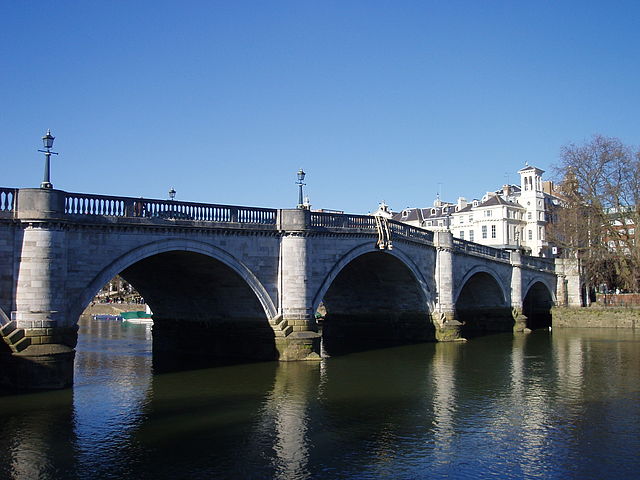
In the same way, as its neighboring bridge does, Richmond Bridge connects Twickenham and Richmond across the Thames. It was constructed from 1774 to 1777 to supersede a boat crossing and is today the longest existing Thames bridge.
The Richmond Railway Viaduct, which sits upstream of Twickenham Bridge, transports the National Rail service operated by South Western Railway along the Waterloo to Reading Line.
Cast-iron girders measuring 30 meters in length were part of the first design by Joseph Locke and J. E. Errington. The bridge was reconstructed in 1908 after concerns were raised about its safety. J W Jacomb-Hood, an engineer for the London & South Western Railway, was responsible for this version.
10. Chelsea Bridge
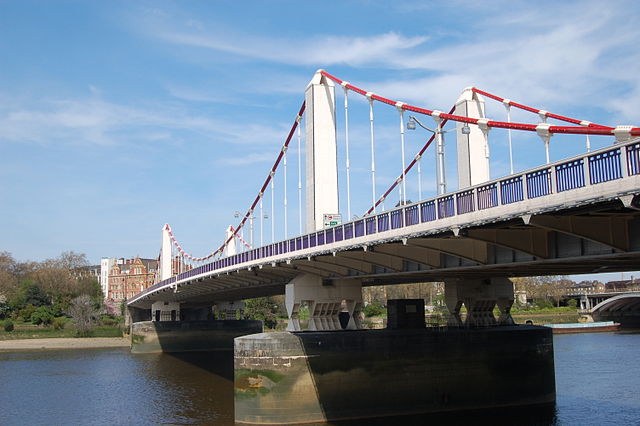
Workers building Chelsea Bridge (then called Victoria Bridge) in 1851 discovered Roman and Celtic weaponry and human skulls, leading some to speculate that this was the spot where Julius Caesar led his army across the Thames.
West London’s Chelsea Bridge links the northern neighborhood of Chelsea with the southern neighborhood of Battersea.
To facilitate travel from the northern edge to the freshly constructed park on the opposite side of the river, this plan was proposed in the 1840s as a portion of the extensive transformation of the wetlands on the southern banks of the river.
The bridge was not well-liked by the general people despite its architectural merits, and this was mostly due to its high toll. Therefore, parliament favored making it toll-free every Sunday, although competition from the nearby Albert Bridge, which had just been built, was still fierce.

